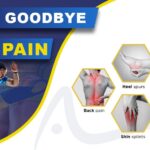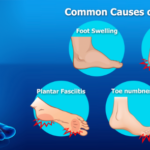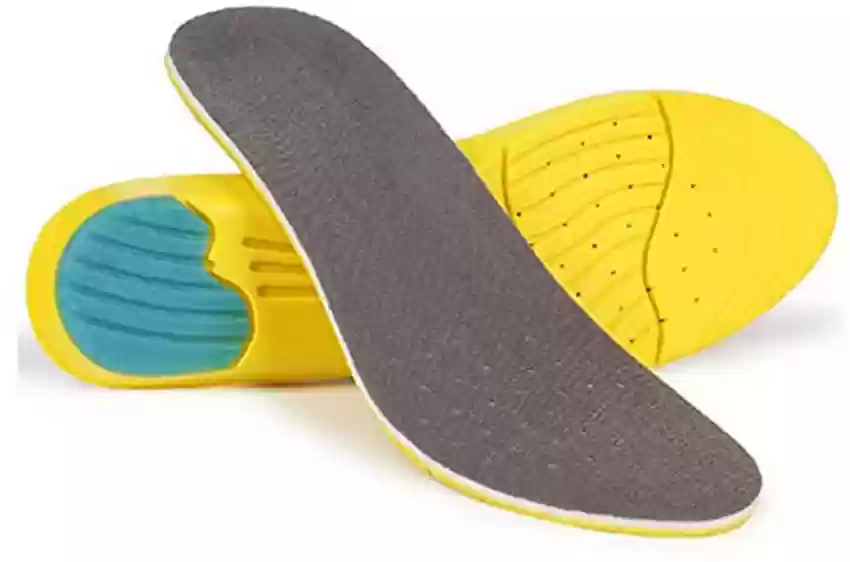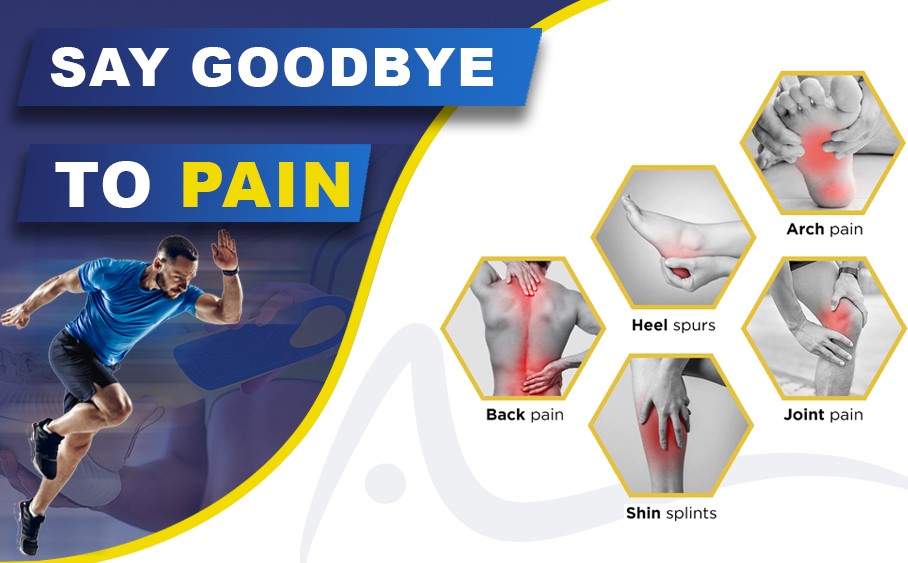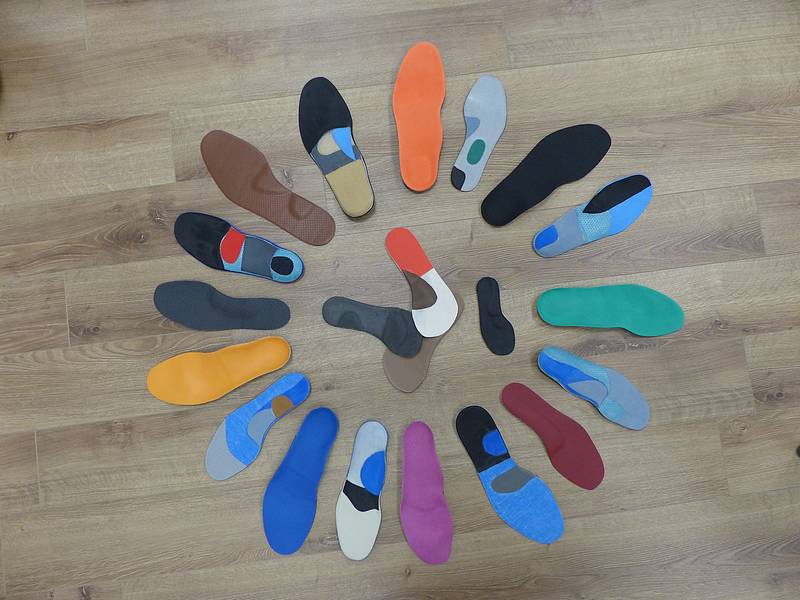Looking for optimal comfort and support for high arches? Explore orthopedic insoles designed specifically to alleviate discomfort and offer stability for high arches.
Introduction
High arches can often lead to discomfort and pain when walking or standing for extended periods. Finding the right support for your feet is crucial for maintaining comfort and preventing potential issues. Orthopedic insoles designed for high arches can be a game-changer, offering the necessary support and relief. This article delves into the world of orthopedic insoles tailored for high arches, guiding you through their benefits, features, and how they contribute to your overall foot health.
Understanding High Arches
High arches, also known as pes cavus, describe a foot condition where the arch in the middle of the foot is unusually high. This creates a distinct gap between the sole of the foot and the ground when standing. While less common than flat feet, high arches can lead to specific challenges and discomfort.
The raised arches in high-arched feet can result in uneven weight distribution across the foot. This can concentrate pressure on the balls and heels of the feet, causing discomfort, pain, or even strain on the ankles. People with high arches might feel more pressure on certain parts of their feet, leading to potential foot problems like plantar fasciitis, Achilles tendonitis, or stress fractures.
Additionally, the smaller surface area in contact with the ground can affect balance and stability. Individuals with high arches might experience difficulties in finding proper-fitting footwear and often struggle with instability while standing or walking for extended periods.
Understanding high arches is essential for choosing appropriate support and care. Orthopedic insoles, specifically designed to provide cushioning and support, can be highly beneficial. They help distribute weight more evenly, alleviate pressure points, and enhance stability, reducing the risk of associated foot problems and discomfort.

The Impact of High Arches on Daily Life
1. Foot Discomfort and Pain
The elevated arches in high-arched feet can lead to discomfort and pain, especially during weight-bearing activities. The increased pressure on specific areas of the foot can cause soreness, fatigue, and even sharp pain.
2. Footwear Challenges
People with high arches often encounter difficulties in finding suitable footwear. Standard shoes might lack the necessary arch support, resulting in discomfort and an inability to accommodate the unique foot structure.
3. Balance and Stability Issues
The smaller contact area between the foot and the ground can affect balance and stability. This imbalance might manifest as difficulties in maintaining equilibrium, particularly on uneven surfaces.
4. Heightened Injury Risk
High arches can predispose individuals to a higher risk of certain injuries. Reduced contact with the ground can impact stability, potentially leading to ankle twists or sprains during physical activities.
5. Activity Limitations
Engaging in certain activities may become challenging due to discomfort or instability caused by high arches. Long periods of standing or high-impact activities may exacerbate discomfort.
Addressing the Impact
Understanding the implications of high arches is pivotal for managing their effects. Specialized orthopedic insoles specifically designed to support high arches can alleviate discomfort by redistributing pressure and providing adequate cushioning.
Moreover, opting for footwear tailored for high arches or incorporating exercises targeting foot strength and flexibility can enhance stability and reduce discomfort during daily activities. Seeking professional guidance from a podiatrist or foot specialist can also provide personalized strategies to manage the impact of high arches on daily life.
Identifying High Arches
Physical Characteristics:
- Arch Height: Look for a conspicuous, raised arch when the foot is bearing weight. It’s visibly higher than average, creating a noticeable curve along the midfoot.
- Footprint Examination: The wet footprint test involves wetting the feet and stepping onto a surface. High arches typically show a thin, curved footprint with minimal contact along the midfoot area.
- Toe Alignment: High arches can cause the toes to claw or curl due to tightened tendons, visibly affecting toe positioning.

Associated Symptoms:
- Foot Discomfort: Individuals with high arches may experience pain or discomfort in the arch, heels, or balls of the feet, particularly during physical activities or extended periods of standing.
- Challenges in Footwear: Difficulty finding comfortable shoes due to inadequate arch support in standard footwear.
- Balance and Stability Issues: Reduced contact area with the ground can result in difficulties maintaining balance, especially on uneven surfaces.
Testing Methods:
- Wet Foot Test: Wet the feet and step onto a surface to examine the resulting footprint. A narrow, curved imprint with minimal midfoot contact indicates high arches.
- Footwear Analysis: Inspect worn shoes for signs of uneven wear, especially excessive wear on the outer edges, suggesting increased pressure due to high arches.
- Professional Evaluation: Seeking assessment from a podiatrist or foot specialist involves a comprehensive examination, including analyzing gait patterns and foot structure, to confirm and address high arches.
Recognizing these characteristics and symptoms, along with employing testing methods, aids in early identification of high arches. Timely interventions, such as supportive footwear or customized orthopedic solutions, can mitigate discomfort and potential foot-related issues associated with this foot structure.
Orthopedic Insoles: A Solution for High Arches
1. Customized Arch Support:
Orthopedic insoles are specifically designed to cater to high arches, offering tailored arch support that aligns with the foot’s natural structure. This targeted support helps distribute weight evenly, reducing pressure on specific areas of the foot.
2. Cushioning and Shock Absorption:
These insoles often feature cushioned materials that absorb shock during movement. This is particularly beneficial for individuals with high arches, as it helps cushion the impact and minimize discomfort while walking or standing.
3. Corrective Alignment:
Orthopedic insoles aid in correcting foot alignment. For those with high arches, these insoles assist in aligning the foot properly, reducing strain on muscles and tendons and preventing potential issues like plantar fasciitis or tendon injuries.
4. Enhanced Comfort and Stability:
By providing consistent support, orthopedic insoles enhance comfort and stability. This is crucial for individuals with high arches, as it improves balance and reduces the risk of ankle instability or related injuries.
5. Versatility for Various Footwear:
These insoles are adaptable and can be used in various types of footwear, including athletic shoes, dress shoes, or casual footwear. This versatility ensures continuous support across different activities and occasions.
6. Customization Options:
Depending on individual needs, orthopedic insoles can be customized further for a more precise fit and tailored support, ensuring maximum comfort and effectiveness.
7. Prevention of Foot Conditions:
Regular use of orthopedic insoles can prevent or alleviate foot-related issues commonly associated with high arches, such as plantar fasciitis, Achilles tendonitis, or stress fractures.
In conclusion, orthopedic insoles are a highly effective solution for individuals with high arches. They offer targeted support, cushioning, and corrective alignment, significantly improving comfort, stability, and overall foot health. Investing in quality orthopedic insoles can alleviate discomfort and mitigate potential foot problems associated with high arches, allowing for a more comfortable and active lifestyle.
How Orthopedic Insoles Work
1. Customized Arch Support:
Orthopedic insoles are engineered with varying levels of arch support. For high-arched individuals, these insoles provide elevated arch support, filling the gap between the foot and the ground. This support is critical in distributing weight evenly and reducing pressure points.
2. Pressure Redistribution:
By offering a combination of cushioning and support, these insoles redistribute the pressure exerted on the feet. They alleviate excessive strain on specific areas like the balls of the feet or the heels, easing discomfort associated with high arches.
3. Shock Absorption Mechanism:
Incorporating shock-absorbing materials, orthopedic insoles cushion the impact of each step, particularly beneficial for those with high arches. This feature minimizes the stress placed on the feet during activities, reducing fatigue and discomfort.
4. Alignment Adjustment:
Orthopedic insoles aid in aligning the foot to a more neutral position. For individuals with high arches, these insoles help correct alignment issues, reducing strain on tendons and muscles, and decreasing the risk of injuries such as plantar fasciitis or tendon strains.
5. Stability Enhancement:
Consistent support from these insoles enhances stability. This is crucial for those with high arches, as it improves balance and decreases the likelihood of ankle twists or instability-related accidents.
6. Versatility Across Footwear:
Orthopedic insoles are versatile and adaptable to various types of shoes, ensuring continuous support across activities and footwear styles, be it athletic shoes, dress shoes, or casual footwear.
7. Customization Features:
Some orthopedic insoles offer customization options, allowing individuals to modify the insoles for a more tailored fit. This customization enhances comfort and effectiveness for specific foot shapes and preferences.
8. Preventive Foot Care:
Regular use of orthopedic insoles can prevent or alleviate common foot conditions linked to high arches. They aid in maintaining better foot health by reducing the impact of the foot structure on daily activities.
In summary, orthopedic insoles function by providing specialized support, redistributing pressure, absorbing shock, correcting alignment, and enhancing stability. They offer a comprehensive solution to alleviate discomfort and mitigate potential foot-related issues for individuals with high arches, facilitating improved comfort and mobility.
Key Features to Look for in Orthopedic Insoles
1. Enhanced Arch Support:
Prioritize insoles explicitly designed to cater to high arches. These insoles feature elevated arch support, crucial for proper weight distribution and alignment.
2. Advanced Cushioning Technology:
Look for insoles incorporating advanced cushioning materials like memory foam, gel pads, or EVA foam. These materials offer superior shock absorption, minimizing impact-related discomfort.
3. Contoured Design for Precision Fit:
Seek insoles with a contoured design that mirrors the foot’s natural shape. This design ensures a snug fit, particularly around the arch area, optimizing support.
4. Durable and Breathable Materials:
Choose insoles crafted from durable yet breathable materials to ensure lasting comfort. Quality materials prevent moisture buildup, reducing the risk of foot issues.
5. Customization Features for Personalized Fit:
Consider insoles offering customization options, such as trimmable edges or additional inserts. Customizable features enable a tailored fit, accommodating unique foot sizes and shapes.
6. Versatile Compatibility with Various Shoe Styles:
Opt for insoles adaptable to different shoe types, including athletic shoes, dress shoes, or casual footwear. This versatility ensures consistent support across diverse activities and occasions.
7. Secure Anti-Slip Design:
Look for insoles equipped with anti-slip properties or adhesive backing to securely stay in place within the shoe. Preventing movement or slippage ensures continual support.
8. Medical Grade or Podiatrist-Recommended Insoles:
Consider insoles endorsed as medical-grade or recommended by podiatrists. These options often boast specialized support and cater to specific foot conditions like high arches.
9. Moisture-Wicking and Odor-Control Features:
Prioritize insoles with moisture-wicking properties to keep feet dry and combat odor. Features that manage moisture ensure hygiene and comfort throughout the day.
10. Accessible Return Policy or Trial Period:
Choose brands offering a flexible return policy or trial period. This allows users to test the insoles and ensure they meet comfort and support requirements.
By considering these comprehensive features, individuals can make informed choices, selecting orthopedic insoles tailored explicitly to alleviate discomfort and provide optimal support for high arches.
Finding the Right Orthopedic Insoles
1. Precise Arch Support Targeting:
Insoles boasting Atlas Arch Support are engineered to specifically cater to the highest point of the arch. This targeted support is crucial for high arches, providing a focal point of support where it’s needed most.
2. Customized Arch Elevation:
These insoles are designed to elevate and cradle the arch precisely at its apex. This tailored support complements the natural contours of high-arched feet, offering a more personalized fit.
3. Pressure Redistribution Benefits:
The inclusion of Atlas Arch Support assists in redistributing pressure evenly across the foot. By doing so, it mitigates undue strain on specific areas, reducing discomfort and preventing potential foot-related issues.
4. Alignment Enhancement and Stability:
Insoles with Atlas Arch Support contribute to improved alignment and stability. By focusing on the high point of the arch, these insoles aid in positioning the foot correctly, reducing strain on muscles and tendons.
5. Advanced Shock Absorption Properties:
Many insoles featuring Atlas Arch Support also integrate advanced shock-absorbing materials. This feature cushions each step, effectively reducing the impact on high-arched feet and offering relief from discomfort.
6. Customization Options for Personalized Fit:
Look for insoles offering Atlas Arch Support with customization features. These may include adjustable inserts or guidelines for trimming, ensuring a more tailored fit to accommodate individual foot shapes and sizes.
7. Versatility Across Footwear Styles:
Opt for insoles with Atlas Arch Support compatible with various shoe types. This versatility ensures consistent and targeted support across different activities and shoe styles.
8. Professional Endorsements and Certifications:
Consider insoles that boast Atlas Arch Support and are recommended by podiatrists or medical professionals. Such endorsements validate the efficacy of the support system for high arches.
9. User Feedback Insights:
Review user testimonials to gauge the practical benefits of Atlas Arch Support in specific insoles. Real experiences offer valuable insights into the effectiveness and comfort levels provided.
10. Trial Period or Return Policy:
Choose brands offering a trial period or flexible return policy. This allows ample time to test the insoles and ensure they effectively cater to the unique needs of high arches.
Orthopedic insoles featuring Atlas Arch Support offer targeted, personalized, and enhanced support tailored specifically for individuals with high arches. By addressing comfort, stability, and alignment, these insoles aim to alleviate discomfort and promote better foot health.
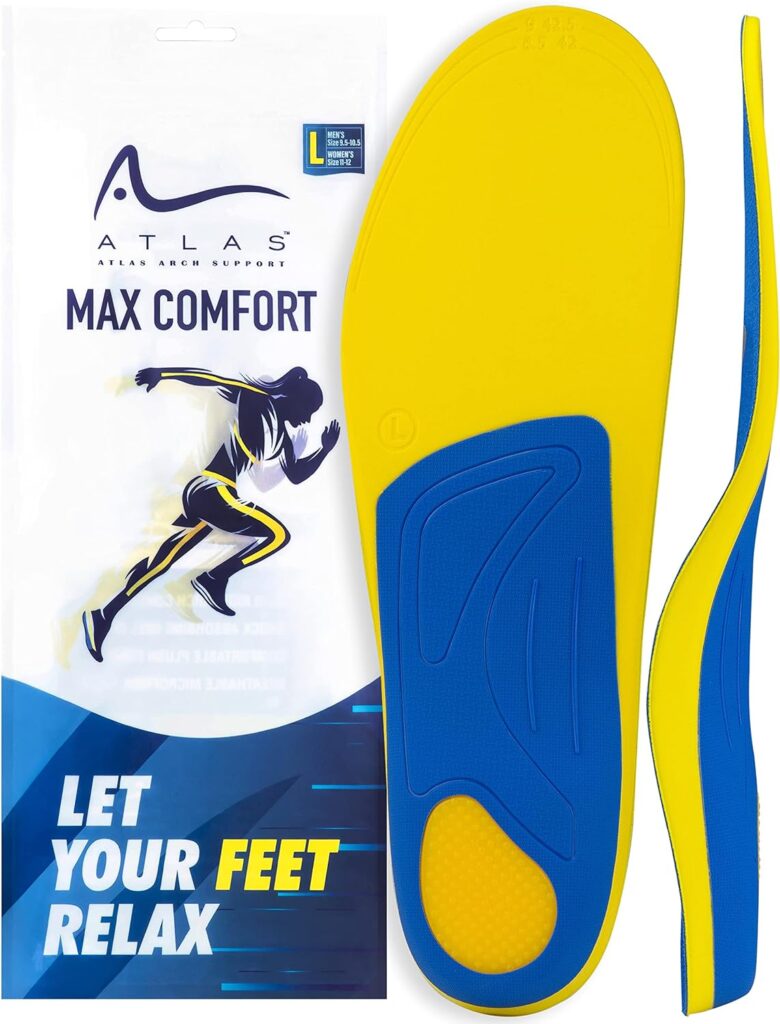
Factors to Consider When Purchasing
1. Arch Support:
Look for insoles explicitly designed to provide ample arch support, especially catering to high arches. Proper support helps distribute weight evenly and reduces strain on the foot’s arches.
2. Cushioning and Shock Absorption:
Prioritize insoles with quality cushioning materials like memory foam or gel pads. Effective shock absorption minimizes impact-related discomfort, crucial for individuals with high arches.
3. Contoured Design for Fit:
Seek insoles with a contoured design that mirrors the natural shape of the foot. This ensures a snug fit and proper support, particularly around the arch area.
4. Material Quality:
Choose insoles made from durable yet breathable materials to ensure lasting comfort. Quality materials prevent moisture buildup and potential foot issues.
5. Customization Options:
Consider insoles offering customization features, such as trimmable edges or additional inserts. Customizable features enable a more tailored fit, accommodating unique foot shapes.
6. Compatibility with Shoe Styles:
Opt for versatile insoles compatible with different shoe types, ensuring consistent support across various activities and shoe styles.
7. Secure Fit and Anti-Slip Features:
Look for insoles designed with anti-slip properties or adhesive backing to stay securely in place within the shoe. This prevents movement and ensures continual support.
8. Professional Endorsements:
Consider insoles recommended by podiatrists or labeled as medical-grade. Professional endorsements validate the effectiveness of the support system, especially for high arches.
9. Moisture-Wicking Properties:
Prioritize insoles with moisture-wicking features to keep feet dry and maintain hygiene, reducing the risk of foot issues associated with moisture buildup.
10. Trial Period or Return Policy:
Choose brands offering a trial period or return policy. This allows testing the insoles and ensuring they meet comfort and support needs before committing to a purchase.
These factors collectively contribute to selecting orthopedic insoles that effectively address the unique needs of high arches, providing optimal support, comfort, and relief.
FAQs
Are Orthopedic Insoles Customizable?
Yes, orthopedic insoles can often be customized to fit the unique contours of your feet, providing personalized support.
How Long Do Orthopedic Insoles Last?
On average, these insoles can last anywhere from 6 months to a year depending on usage and maintenance.
Can Orthopedic Insoles Help Reduce Foot Pain?
Absolutely. The tailored support they offer can alleviate foot pain associated with high arches, providing relief and comfort.
Are Orthopedic Insoles Suitable for All Shoe Types?
While most orthopedic insoles are versatile, it’s essential to check compatibility with various shoe types for a proper fit.
Do Orthopedic Insoles Require a Break-in Period?
Some insoles might need a brief break-in period as they adapt to your foot shape, but many offer immediate comfort.
Can Orthopedic Insoles Prevent Future Foot Problems?
By providing adequate support and cushioning, these insoles can help prevent or minimize potential foot issues associated with high arches.
Conclusion
Investing in orthopedic insoles tailored for high arches can significantly enhance your foot comfort and overall well-being. Their ability to offer targeted support and alleviate discomfort makes them a valuable addition to your footwear collection. Prioritize your foot health by choosing the right orthopedic insoles, ensuring every step is a comfortable one.


